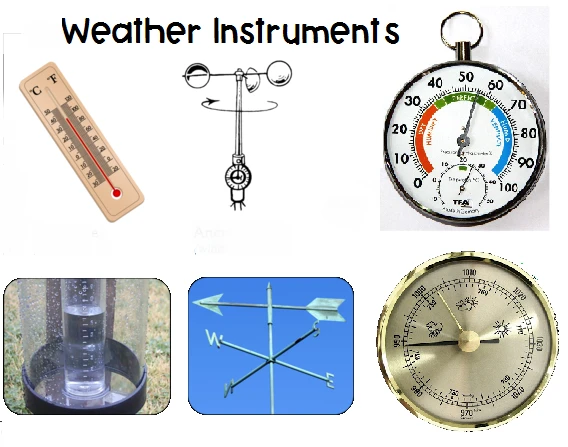Weather Instruments: Tools for Measuring Atmospheric Conditions

# Weather Instruments: Tools for Measuring Atmospheric Conditions
## Understanding the Basics of Weather Instruments
Weather instruments are essential tools used by meteorologists, scientists, and weather enthusiasts to measure various atmospheric conditions. These devices help us understand and predict weather patterns, which is crucial for agriculture, aviation, and daily life planning.
## Common Types of Weather Instruments
### Thermometers: Measuring Temperature
The most familiar weather instrument is the thermometer, which measures air temperature. Modern thermometers come in various forms, including digital and mercury-based models. They work by responding to changes in temperature through expansion or contraction of materials.
### Barometers: Tracking Atmospheric Pressure
Barometers measure atmospheric pressure, which is a key indicator of weather changes. A sudden drop in pressure often signals approaching storms, while rising pressure typically indicates fair weather. There are two main types: mercury barometers and aneroid barometers.
### Anemometers: Gauging Wind Speed
Anemometers are devices that measure wind speed. The most common type features three or four cups that rotate with the wind, with the rotation speed corresponding to wind velocity. Some modern versions use ultrasonic waves or lasers for more precise measurements.
### Hygrometers: Measuring Humidity
Hygrometers determine the amount of moisture in the air, known as humidity. This measurement is important because humidity affects how we perceive temperature and can indicate potential for precipitation. Common types include hair tension hygrometers and electronic capacitive sensors.
### Rain Gauges: Measuring Precipitation
Rain gauges collect and measure the amount of liquid precipitation over a set period. Simple versions consist of a cylindrical container with measurement markings, while more sophisticated models may include tipping buckets that automatically record rainfall amounts.
## Advanced Weather Measurement Tools
### Weather Balloons and Radiosondes
For upper-atmosphere measurements, meteorologists use weather balloons equipped with radiosondes. These instruments measure temperature, humidity, pressure, and wind speed as they ascend through the atmosphere, transmitting data back to ground stations.
### Weather Satellites
Weather satellites provide comprehensive views of weather systems from space. They track cloud formations, storm movements, and other large-scale atmospheric phenomena, offering invaluable data for weather forecasting.
### Doppler Radar Systems
Doppler radar is a powerful tool for detecting precipitation, its motion, and intensity. It’s particularly useful for tracking severe weather like thunderstorms and tornadoes by measuring the frequency shift of reflected radio waves.
## The Importance of Accurate Weather Instruments
Precise weather measurements are critical for:
– Improving weather forecasts
– Early warning systems for severe weather
– Climate change research
– Agricultural planning
– Aviation safety
– Marine navigation
As technology advances, weather instruments continue to become more sophisticated, providing increasingly accurate data that helps us better understand and predict our ever-changing atmosphere.
Keyword: instruments of the weather

